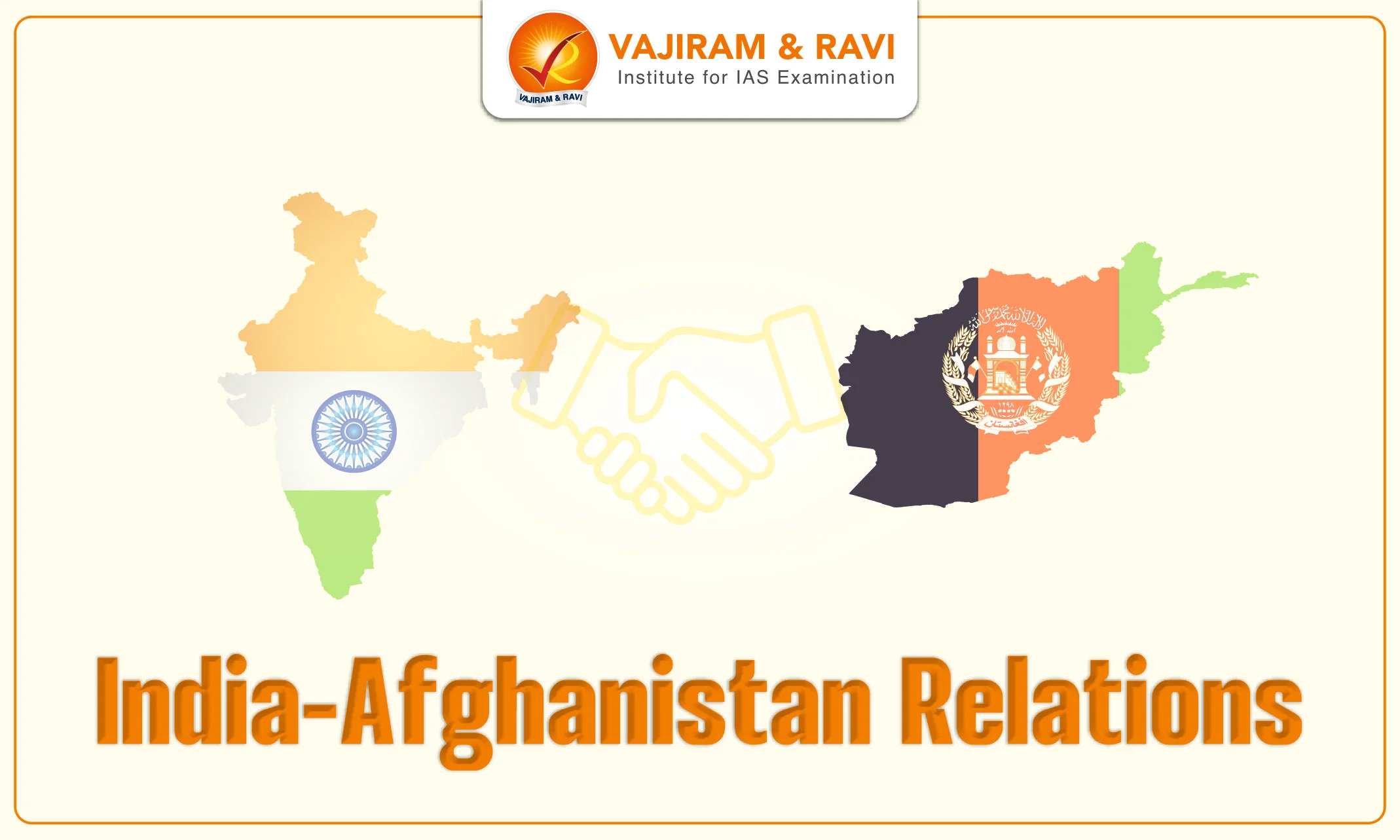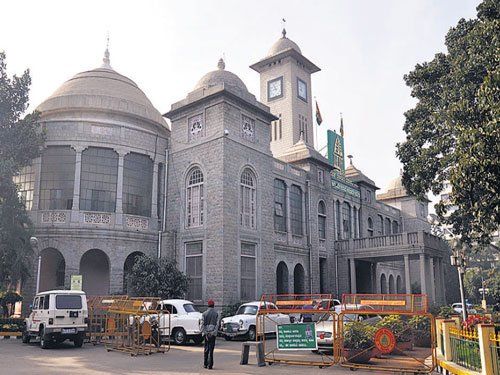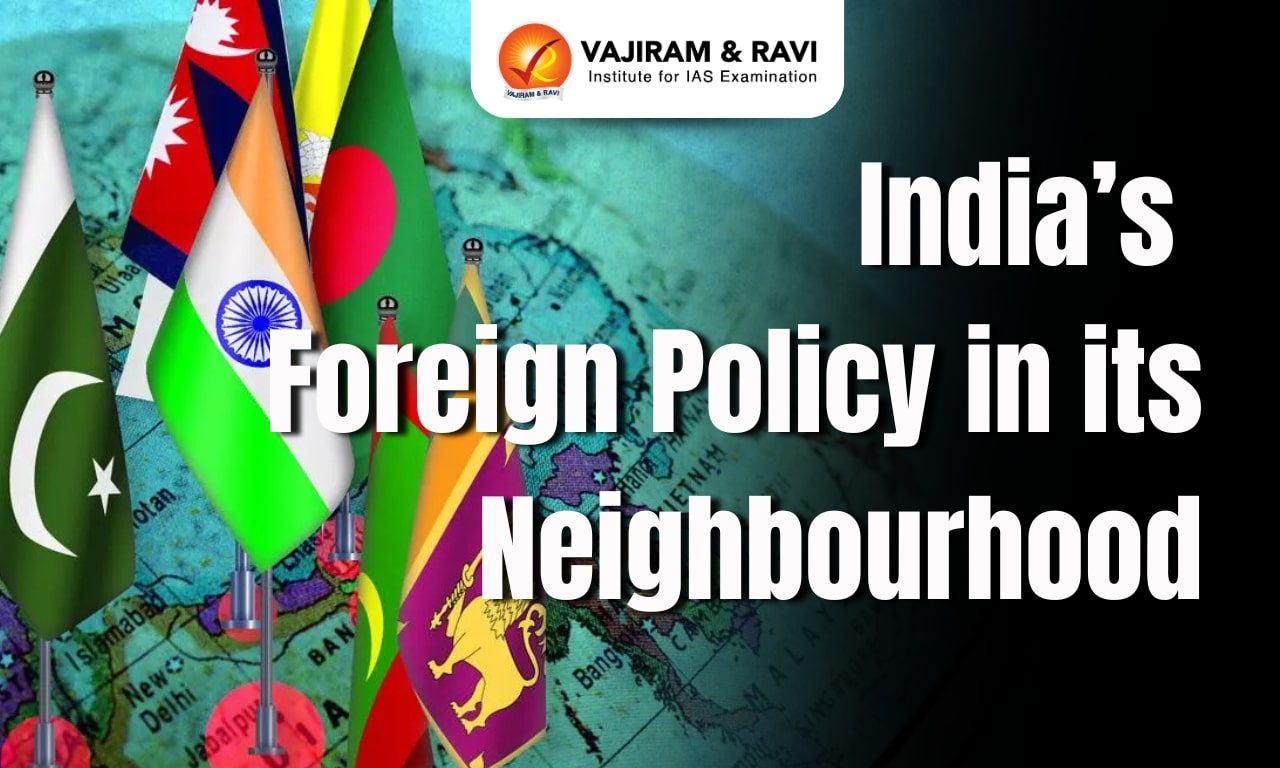What is the historical background of Indo-Afghan relations?
India and Afghanistan have a strong relationship based on historical and cultural links. India has played a significant role in the reconstruction and rehabilitation of Afghanistan. Moreover, the Strategic Partnership Agreement reinforced the strong, vibrant and multi-faceted relations between the two countries.
- In the Vedic Age, Gandhara, which forms parts of modern-day Afghanistan, was considered as one of the 16 Mahajanapadas of Vedic India.
- The contact between the people of modern-day India and Afghanistan has existed since the days of the Indus Valley Civilization.
- During the Soviet intervention (1979-89), India was the only South Asian nation to recognise the Soviet-backed Democratic Republic of Afghanistan.
- In 2005, India proposed Afghanistan's membership in the South Asian Association for Regional Cooperation (SAARC).
- Indo-Afghan relations have been strengthened by the Strategic Partnership Agreement signed between the two countries in 2011.
- After the takeover of Afghanistan by Taliban, Indian Armed Forces started Operation Devi Shakti to evacuate Indian citizens and foreign nationals from Afghanistan after the collapse of Afghanistan and the fall of Kabul to the Taliban.
What is the importance of Afghanistan to India?
Afghanistan is important for India for several reasons:
- Regional Balance of Power: Afghanistan is tied to India’s vision of being a regional leader and a great power, coupled with its competition with China over resources and its need to counter Pakistani influence.
- Strategic Location: Afghanistan's location at the crossroads of South and Central Asia makes it a critical hub for India's regional and international interests.
- Security Concerns: Afghanistan has been a major source of instability and terrorism in the region, and India has a vested interest in ensuring peace and stability in the country.
- Energy and Resources: Afghanistan has abundant natural resources such as oil, natural gas, and minerals, and India sees potential for mutually beneficial cooperation in these sectors.
- Cultural Ties: India and Afghanistan share a rich cultural heritage, and India sees the promotion of cultural and people-to-people ties as an important aspect of its relationship with Afghanistan.
- Regional Cooperation: India sees its relationship with Afghanistan as an important part of its regional cooperation in South Asia, and is committed to supporting Afghanistan's efforts towards peace, stability, and development.
- Connectivity: The most important role of Afghanistan is always considered as India’s gateway to Central Asia.
India and Afghanistan have several areas of engagement, including:
- Strategic Partnership Agreement: Strategic Partnership Agreement (SPA) between the two sides, inter alia, provides for
- assistance to help rebuild Afghanistan's infrastructure and institutions, education and technical assistance to rebuild indigenous Afghan capacity in different areas,
- encouraging investment in Afghanistan's natural resources, providing duty free access to the Indian market for Afghanistan's exports
- support for an Afghan-led, Afghan-owned, broad-based and inclusive process of peace and reconciliation,
- advocating the need for a sustained and long-term commitment to Afghanistan by the international community.
- Heart of Asia process:
- Heart of Asia process or the Istanbul Process, started in 2011 to provide more assistance to Afghanistan. The process has three main pillars:
- Political Consultations
- Confidence Building Measures(CBMs)
- Cooperation with Regional Organizations
- This platform was established to address the shared challenges and interests of Afghanistan and its neighbors and regional partners. The Heart of Asia is comprised of 14 participating countries, 17 supporting countries, and 12 supporting regional and international organizations.
- India hosted the Sixth Ministerial conference of Heart of Asia in December 2016 at Amritsar.
- Heart of Asia process or the Istanbul Process, started in 2011 to provide more assistance to Afghanistan. The process has three main pillars:
- India’s contribution in reconstruction efforts
- India has committed over 3 billion US$ for development efforts in Afghanistan.
- It has financed and built significant projects such as:
- Delaram Zaranj Highway
- Parliament Building
- India Afghanistan Friendship Dam/Selma Dam, Hari River, Heart Province
- Transmission lines to Kabul
- While it has avoided its own military presence, India views foreign military presence in Afghanistan as indispensable in promoting political stability and development in the country. The USA has also urged India to get involved more.
- India believes in invest and endure strategy for Afghanistan.
- Defence cooperation: India delivered three Russia-made Mi-25 attack helicopters to Afghanistan in 2015 and 2016.
- People to People ties: As of 2023, there were around 14,000 Afghan students studying in India with scholarship support from different institutions like the Indian Council for Cultural Relations (ICCR).
- Military training: Since 2011, around 700 Afghans train in India every year in institutions such as the National Defence Academy, Indian Military Academy.
- Multilateral cooperation: Both countries cooperate at international level in various multilateral bodies such as SAARC,
- Chabahar port, located in southeastern Iran, serves as a gateway for India to access landlocked Afghanistan and Central Asia, while also providing an alternative trade route to Afghanistan that bypasses Pakistan.
- Disaster assistance and emergency relief: In 2022, India has sent 27 tonnes of emergency relief assistance for the people of Afghanistan in the aftermath of the 5.9-magnitude earthquake that killed more than 1,000 people.
- Development aid: The Centre in its budget for 2023-24, has set aside Rs 200 crore as assistance.
- Line of credit: In order to expand entrepreneurship and business-to-business cooperation, especially between small and medium enterprises of India and Afghanistan, India has offered Afghanistan a 50 million US dollars line of credit facility.
What are the roadblocks in India-Afghanistan relations?
There are several roadblocks in India-Afghanistan relations, including:
- Pakistan's role: Pakistan views India's growing presence in Afghanistan as a threat to its security and regional influence, and has tried to block India's efforts to deepen its ties with Afghanistan.
- Terrorist groups: India and Afghanistan are both targets of terrorism, and the continued presence of terrorist groups like Al-Qaeda in Afghanistan is a major concern for India.
- Economic and infrastructure challenges: Afghanistan is one of the poorest and least developed countries in the world, and India's efforts to build infrastructure such as Salma Dam and Parliament Building and invest in the country have been hampered by security issues, corruption, and other challenges.
- China factor: China has been increasingly active in Afghanistan in recent years, and this has led to concerns in India about China's growing influence and engagements with Taliban in the region.
- Drug trafficking: Afghanistan is the world's largest producer of opium, and the drug trade has contributed to instability and violence in the region, affecting both India and Afghanistan.
What are India’s concerns after the withdrawal of US forces?
There are several concerns for India after the withdrawal of US forces from Afghanistan, including:
- Limitations of India’s existing approach: India has always supported “an Afghan-led, Afghan-owned and Afghan-controlled” process for enduring peace and reconciliation in Afghanistan. It involved active engagement with the elected Afghan Government and isolation of the Taliban regime.
- Revival of terrorism: India faces threat from terrorist factions such as the Haqqani group, which is among the United Nations’ designated entities as a terror group and is a key member of the Taliban.
- Threat to financial and strategic investments: Over the past years, India has invested an estimated $3 billion in projects across Afghanistan. Taliban takeover not only poses a security threat to India’s assets, but also lays waste to India’s efforts.
- Increasing influence of China and Pakistan: The nexus between the Taliban and the Inter Services Intelligence of Pakistan raises concerns about Pakistan’s increasing influence within the country.
- Also, absence of U.S. financial and military aid opens up avenues for China to gain influence over the nation.
How should India reorient its ties with the Taliban-led Afghanistan?
India has reopened its embassy in Kabul after nearly ten months of Taliban takeover of Afghanistan. Thus, India should deal with Taliban-led Afghanistan through:
- Rising International Engagements: India has so far focused only on the isolating Taliban. However, beyond a point, this option will yield diminishing returns, as many other countries are now starting to engage the Taliban and India is an important stakeholder in Afghanistan.
- National Security: Taliban has ties with the Lashkar-e-Taiba and Jaish-e Mohammed. An engagement with the Taliban would give an opportunity to convey Indian concerns regarding terrorist activities in India.
- Mutually beneficial: Taliban encouraged India to reopen its mission in Kabul, resumed direct flights to the country and also accept Afghan military trainees.
- India needs a long-term strategic approach towards Afghanistan that weaves political, economic, military and diplomatic dimensions into a coherent whole within the framework of a grand strategy.
- India’s Afghan policy must be based on a clear-cut understanding of India’s strategic goals in the region, and the regional and global strategic environment.
- It is necessary for both sides i.e. India and Taliban to take into account each other’s concerns and improve diplomatic and economic relations.
- India should increase its investment in Afghanistan, particularly in areas such as infrastructure development, agriculture, and energy. This would help improve the Afghan economy and create jobs, and also deepen India's economic engagement with Afghanistan.
Last updated on December, 2025
→ Check out the latest UPSC Syllabus 2026 here.
→ Join Vajiram & Ravi’s Interview Guidance Programme for expert help to crack your final UPSC stage.
→ UPSC Mains Result 2025 is now out.
→ UPSC Notification 2026 is scheduled to be released on January 14, 2026.
→ UPSC Calendar 2026 is released on 15th May, 2025.
→ The UPSC Vacancy 2025 were released 1129, out of which 979 were for UPSC CSE and remaining 150 are for UPSC IFoS.
→ UPSC Prelims 2026 will be conducted on 24th May, 2026 & UPSC Mains 2026 will be conducted on 21st August 2026.
→ The UPSC Selection Process is of 3 stages-Prelims, Mains and Interview.
→ UPSC Result 2024 is released with latest UPSC Marksheet 2024. Check Now!
→ UPSC Prelims Result 2025 is out now for the CSE held on 25 May 2025.
→ UPSC Toppers List 2024 is released now. Shakti Dubey is UPSC AIR 1 2024 Topper.
→ UPSC Prelims Question Paper 2025 and Unofficial Prelims Answer Key 2025 are available now.
→ UPSC Mains Question Paper 2025 is out for Essay, GS 1, 2, 3 & GS 4.
→ UPSC Mains Indian Language Question Paper 2025 is now out.
→ UPSC Mains Optional Question Paper 2025 is now out.
→ Also check Best IAS Coaching in Delhi
India-Afghanistan Relations FAQs
Q1. What is the UNSC resolution 1267?+
Q2. What is Durand Line?+

















